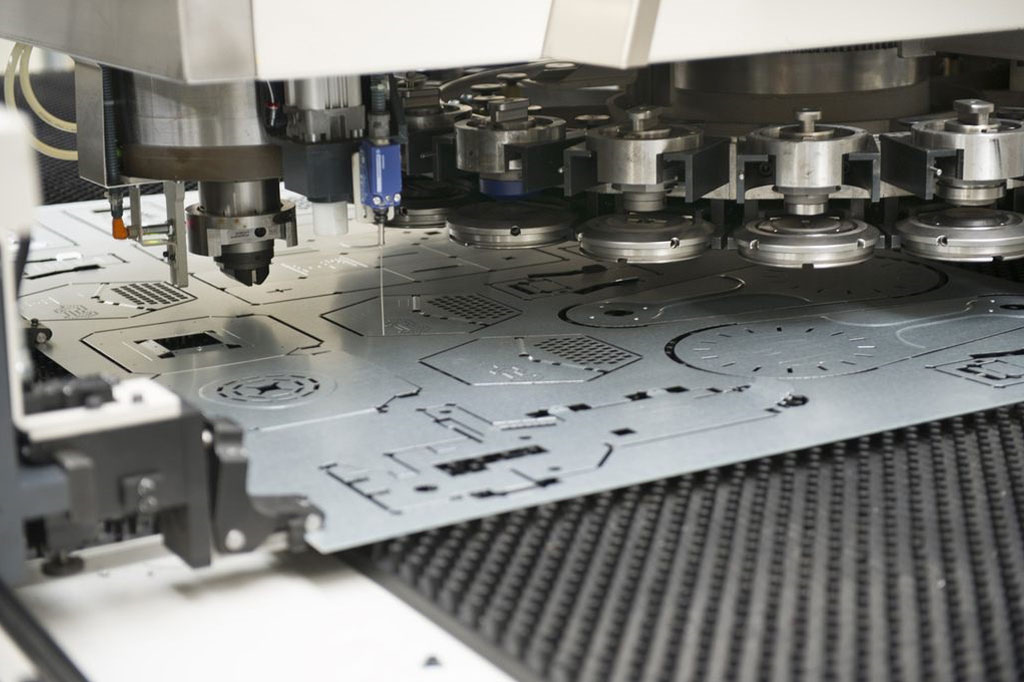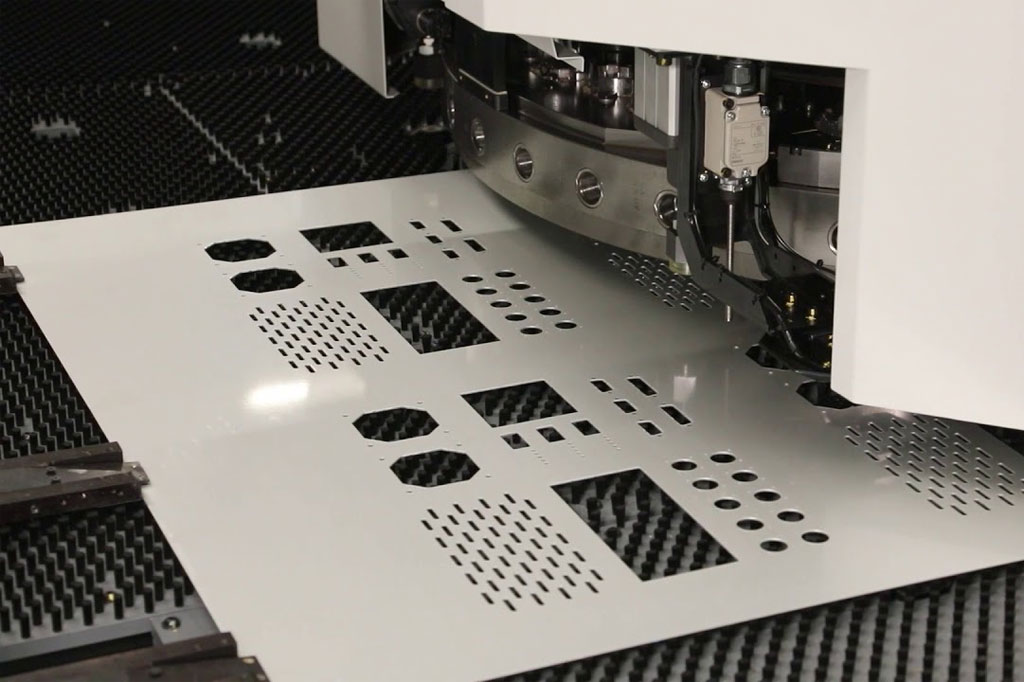Turret punching is a versatile and highly efficient process used in the sheet metal fabrication industry. The process utilizes a turret punch press, featuring a rotating turret tool holder that accommodates multiple punches and dies.
The turret punch press is programmed to punch holes, cut shapes, or create other features in a sheet of metal, making it an essential part of modern manufacturing operations.
What is Turret Punching?
At its core, turret punching is a method of creating holes and shapes in sheet metal through the use of a mechanical press with multiple punch and die sets. The sheet metal is fed into the machine, and the press uses a selected punch to create holes or patterns of various sizes, shapes, and depths.
The key feature of turret punching is the turret itself. This rotating turret holds a variety of punches and dies, allowing manufacturers to switch between different tools quickly without needing to change out the entire setup. This flexibility is what makes turret punching a highly efficient method, capable of performing a wide range of operations on the same sheet.
How Turret Punching Works
The turret punch press consists of a rotating turret, a ram (which drives the punches), and a bed for holding the sheet metal. The turret holds several different punch and die tools, which are automatically indexed to the desired position for each operation.
The steps involved in the turret punching process are as follows:
- Tool Selection: The machine’s control system selects the appropriate punch and die tool from the turret.
- Sheet Metal Positioning: The sheet metal is placed on the bed of the turret punch press.
- Punching Process: The press applies force to the punch, which then punches through the sheet metal, forming holes, shapes, or perforations.
- Repeat or Adjust: The machine repeats the process for additional holes or shapes, and the turret can be indexed to select different tools as needed.
Some turret punching machines also have the capability for automatic tool changes, allowing manufacturers to perform complex operations without manual intervention.
Advantages of Turret Punching
- High Precision: Turret punching offers high levels of precision, making it suitable for applications that require consistent and accurate holes or shapes in sheet metal.
- Versatility: The ability to use multiple punches and dies on the same machine gives turret punching unmatched versatility. It can produce a wide range of shapes, sizes, and patterns, including round holes, square holes, slotted holes, and more.
- Cost-Effective for Medium Volumes: While turret punching may not be as fast as laser cutting or water jet cutting for certain high-volume applications, it remains a cost-effective option for medium-volume production, especially in scenarios where tooling costs are relatively low.
- Faster Setup Times: Turret punches offer relatively quick tool changes, reducing setup times and allowing for greater production flexibility.
- Material Efficiency: The precision of turret punching reduces material waste, making it a cost-efficient option for manufacturing sheet metal parts.
Applications of Turret Punching
Turret punching is commonly used in a variety of industries, including:
- Automotive: Turret punching is used to create metal components for vehicles, including body panels, brackets, and other structural parts.
- Aerospace: The aerospace industry uses turret punching to create precision parts, including complex shapes for aircraft bodies and components.
- Electronics: Turret punching is often used to create enclosures, mounts, and frames for electronic devices.
- Construction: It is used to create metal components for the construction industry, including panels, frames, and brackets for buildings and infrastructure projects.
- Furniture and Appliances: Turret punching is used in the manufacture of metal parts for household appliances, office furniture, and kitchen equipment.
Types of Turret Punching Machines

There are different types of turret punch presses available, depending on the needs of the manufacturing process:
- Single-Station Turret Punch Press: This type of machine features a single turret station, ideal for basic punching operations.
- Multi-Station Turret Punch Press: These machines have multiple stations, allowing for more complex operations such as punching, forming, and bending in one pass.
- CNC Turret Punch Press: Computer Numerical Control (CNC) machines are the most advanced version of turret punching machines. These machines are highly automated and programmable, offering greater flexibility and precision. CNC turret punching can be fitted with automatic loading and unloading systems, enhancing the efficiency of the production process.
Limitations of Turret Punching
While turret punching is highly efficient, there are a few limitations to consider:
- Thickness Limitations: Turret punching is most effective on thinner sheets of metal (typically less than 6 mm).
- Complexity of Shapes: While turret punching can create a variety of shapes, extremely intricate or detailed cuts may be more difficult to achieve compared to other cutting technologies.
- Material Limitations: Some harder materials may not be suitable for turret punching, and additional considerations for tooling and material handling may be needed.

